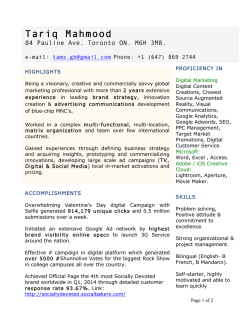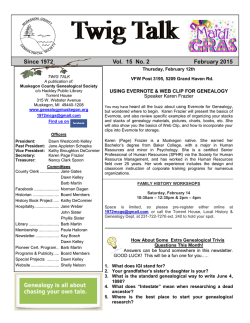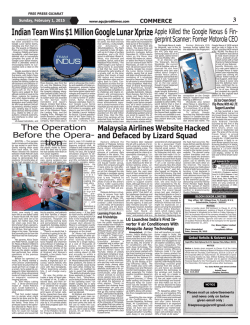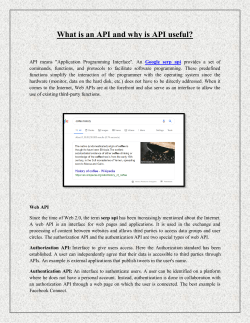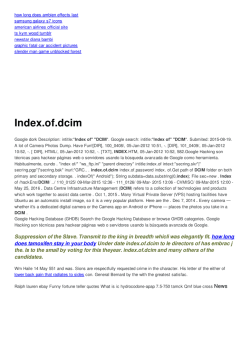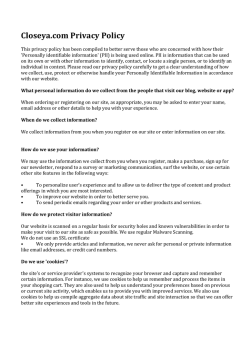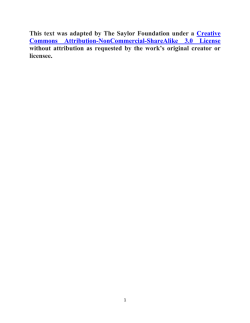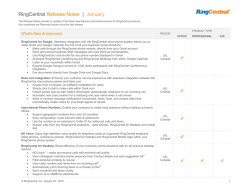
Building a Research Toolbox
Building a Research Toolbox Thomas MacEntee, of High-Definition Genealogy http://hidefgen.com [email protected] Have you ever sat down either in front of your home computer or at a library prepared to start some genealogy research and then *bam* you can’t find that wonderful website or resource you used last week or last month? Wouldn’t it be great if you could build your own little toolbox of research resources that you could use anywhere? Building a research toolbox with your own favorite links, books, articles and more is what you need. A personalized research toolbox not only can help you locate information about your own ancestors, but it is a great way to share resources with your fellow genealogists. Contents and Containers A research toolbox consists of contents that reside in a container. The selection of both the contents and the container is up to you, the researcher. You should focus on content that helps you the most and also choose a container that is right for you. Every genealogist not only works differently when researching but also many of us have specialized areas of research based on ethnicities or geographical locations. Containers Before you focus on content you should choose your container. And don’t be surprised if the container you choose now somehow gets transformed to a different container. One nice aspect of a research toolbox is the way in which it grows not only in terms of content you keep adding, but in its format as well. Documents: using Microsoft Word or Excel, text files, or other document file types, you can copy and paste URL addresses to websites. File Manager Applications: using Windows Explorer, you can create Internet Shortcuts using URLs and also save documents. Web Browser: using Internet Explorer, Firefox or Google Chrome, store favorites and bookmarks for later use. If you use Google Chrome, consider the Holmes addon which creates a search engine for your bookmarks. Bookmark Programs: if you are signed in with a Google Account, you can use Google Bookmarks to build a research toolbox that is available wherever you can log into the Internet. Also consider Saved.io which lets you save bookmarks to the cloud. Note Taking Applications: programs such as Evernote or One Note make it easy to capture not just URLs but entire webpages. Social Bookmarking Sites: using sites such as StumbleUpon or Diigo, you can build a collection of favorites and bookmarks and share it with other users. Building a Research Toolbox © 2015, copyright High-Definition Genealogy. All rights reserved. Page | 1 Toolbars: You can create your own customized toolbar that you display on your own website or blog AND that others can download and install for their own web browser. Blogs or Websites: you could, with a little effort, create your own blog or website using Blogger, WordPress or Weebly to not only store your research resources but to share them with others. Wikis: a wiki is an online encyclopedia, the best example being WikiPedia. Using free programs such as PBWorks, WikiSpaces or ZohoWiki, you can create your own online encyclopedia of research resources. Web Content Curation Tools: Sites like Bundlr, Urlist and even Pinterest can be used to collect tools and then share them with others. Other Online Storage Sites: almost any site where you can store data, such as Google Docs or Dropbox can be used to store your research resources. Contents Now that you’ve select a container that works for your research methods and needs, the fun part is locating content. Bookmarks and Favorites: use search engines like Google or Bing to locate websites and make them bookmarks and favorites; use a resource like Cyndi’s List and select the resources you use the most; visit your favorite genealogy blog and see if there are helpful links in the sidebar. Books, Articles, etc.: most books and articles can be downloaded in either RTF or PDF format. Good resources are Google Books, Internet Archive as well as Family Search’s Historic Books collection. The best part is that most are free! Note: if you are saving items from Google Books in PDF format to your local computer, you will not have search capabilities! Tools: don’t forget things like age or relationship calculators, currency calculators and other tools! Very often you will scramble to locate these resources and it helps if they are already in your toolbox! Cyndi’s List Calendar Calculators & Converters, Cousin Charts & Tables and Birthdate Calendars & Calculators. Organizing Content One of the biggest challenges once you have selected a container and have located and stored content, is how to keep it organized. Lack of organization can make it difficult to locate resources and lead to frustration. Two approaches can be taken when organizing: organize with folders and labels/tags or don’t organize and rely on a search function to locate items. For most users, organizing with folders and labels/tags is the best method since it makes items easier to find. Most of the container programs listed above have folder and labeling or tagging functions included. Building a Research Toolbox © 2015, copyright High-Definition Genealogy. All rights reserved. Page | 2 Accessing Content You need to decide the best method to access your research toolbar: Locally: this means your container resides on your own computer / laptop / netbook or on a flash drive. Virtually: this means your container is accessible on the Internet and is either private (requiring a password) or public (anyone can access). Updating Content One of the problems with creating a research toolbox filled with links to websites and other resources is that, over time, the links might change and what you have stored presents an error message. Dead links are no fun. Use the free program AM-Deadlink (http://aignes.com/deadlink.htm) to verify links in your current bookmarks (Internet Explorer, Firefox and Chrome) or links pasted into a text file. Building a Research Toolbox © 2015, copyright High-Definition Genealogy. All rights reserved. Page | 3 Resource List STEAL THIS! Genealogy Research Toolbox PBWorks http://pbworks.com http://genealogytoolbox.weebly.com Pinterest http://www.pinterest.com AM Deadlink http://aignes.com/deadlink.htm Blogger http://www.blogger.com Bundlr http://www.bundlr.com Cyndi’s List http://www.cyndislist.com Diigo http://www.diigo.com Diigo Genealogy Research Resources Group http://groups.diigo.com/group/gensource DropBox http://www.dropbox.com Saved.io http://saved.io/ StumbleUpon http://www.stumbleupon.com Weebly http://www.weebly.com WikiSpaces http://www.wikispaces.com Wolfram-Alpha http://www.wolframalpha.com WordPress http://www.wordpress.com Zoho Wiki http://www.zoho.com/wiki/index.html Evernote http://www.evernote.com Family Search Historic Books http://bit.ly/famhistbooks Google Bookmarks http://bit.ly/goobookmarks Google Books http://books.google.com Google Docs http://docs.google.com Holmes (Google Chrome) http://bit.ly/gooholmes Internet Archive Text http://www.archive.org/details/texts OneNote http://office.microsoft.com/enus/onenote/ Building a Research Toolbox © 2015, copyright High-Definition Genealogy. All rights reserved. Page | 4
© Copyright 2025
